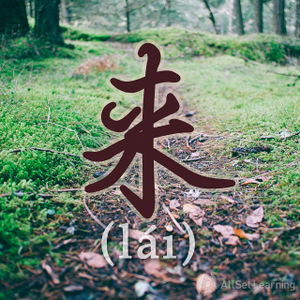Difference between revisions of "Direction complement "-qilai""
| Line 1: | Line 1: | ||
| + | {{Grammar Box}} | ||
| + | |||
起来 (qǐlái) comes up very frequently in Chinese and can be used both literally and figuratively. This is a little like the usage of "up" in English which can be used literally, as in "stand up", or figuratively, as in "add up". | 起来 (qǐlái) comes up very frequently in Chinese and can be used both literally and figuratively. This is a little like the usage of "up" in English which can be used literally, as in "stand up", or figuratively, as in "add up". | ||
| Line 38: | Line 40: | ||
==See also== | ==See also== | ||
| − | + | {{Similar|Result complement "xiaqu"|下去}} | |
| − | + | {{Similar|Resultative Complement "chu(lai)"|出来}} | |
| − | + | {{Similar|Direction complement}} | |
| − | + | {{Similar|Result complements "dao" and "jian"}} | |
| + | {{Similar|Appearance with "kanqilai"}} | ||
== Sources and further reading == | == Sources and further reading == | ||
| Line 53: | Line 56: | ||
* Yale: [http://comet.cls.yale.edu/mandarin/content/directional/grammar/direction-3a.htm Extended meaning of some directional complements] | * Yale: [http://comet.cls.yale.edu/mandarin/content/directional/grammar/direction-3a.htm Extended meaning of some directional complements] | ||
| + | {{Basic Grammar|起来|B1|V + 起来|站 <em>起来</em>!说 <em>起来</em> 容易,做 <em>起来</em> 难。|grammar point|ASGBPXOB}} | ||
Revision as of 06:39, 13 June 2012
-
Level
-
Similar to
-
Used for
-
Keywords
起来 (qǐlái) comes up very frequently in Chinese and can be used both literally and figuratively. This is a little like the usage of "up" in English which can be used literally, as in "stand up", or figuratively, as in "add up".
Contents
Expressing an upward movement:
起来 can be used to express an upward movement like "up", as in the English examples of "stand up" or "pick up."
- 大家 站 起来 了。
- 快点 把 垃圾 捡 起来。
Expressing bringing things together
起来 can be used to express collecting things together, where in English we might say "tidy up", or "add up".
- 请 把13 和 15 加 起来。
- 他 把 袜子 收拾 起来 了。
- 一个 优秀 的 领袖 会 让 他 的 国民 团结 起来。
Expressing an initial judgement
起来 can also be used to express a preliminary judgement. 起来 is used here to express that the speaker has only just initiated an action, and based on that, has made a quick judgement. It is used in the following structure:
Subject + Verb + 起来 + Adjective
This expresses that the subject seems adjective when the action of the verb is performed. This structure is frequently used with perception verbs such as 看, 听, 尝 etc.
Some examples:
- 他 看 起来 很 友好。
- 那 听 起来 不错。
- 这 瓶 啤酒 尝 起来 像 比利时的。
See also
Sources and further reading
Books
- Chinese Grammar - Broken down into 100 items - Basic and Intermediate Levels (汉语语法百项讲练 - 初中级) (pp. 25-31) →buy
- Boya Chinese Elementary Starter 2 (博雅汉语初经起步篇) (pp. 80)→buy
- New Practical Chinese Reader 5 (新实用汉语课本5) (pp. 134-5)→buy



